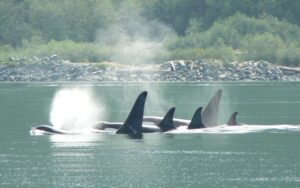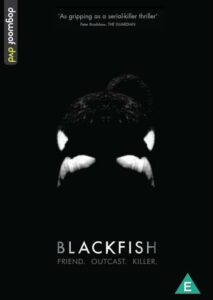2019 Update: SeaWorld Entertainment has agreed to pay $65 million to settle a lawsuit in which the theme park company was accused of misleading investors over the impact the documentary “Blackfish” was having on its bottom line. Attendance and revenue declined after the release of the 2013 documentary about the life of Tilikum, an orca that killed a SeaWorld trainer during a performance in Orlando in 2010.
In January 2013, the documentary Blackfish directed by Gabriela Cowperthwaite premiered at the Sundance Film Festival. It was aired to a wider audience in October 2013 via a broadcast on CNN. The film highlights the issues surrounding keeping Killer Whales (also known as Orcas or Blackfish) in captivity at amusement parks and has generated a great deal of conversation about Killer Whales and the environments they live in.
As of August 2013, there were 45 killer whales in captivity. Issues surrounding Orcas kept in captivity include disease and reduced lifespan, dorsal fin collapse and incompatibility between orcas from different families or pods housed in the same small enclosures. Due to these issues, the discussion Blackfish has generated is an important one and is a reflection on how our knowledge and opinions regarding captive marine mammals has changed over the past 50 years.
It is understandable that people want to both see and protect these magnificent creatures. In addition to the many outfitters like Wildcoast that abide by responsible whale watching guidelines, there are many marine researchers and people from the general public that are passionate about Killer Whales and who study or contribute to their well being. The Southern Residents, a distinct group of fish-eating Orca in the Pacific Northwest (the population many initial captives were sourced from) now remain protected by the Canadian Species at Risk Act and are also included on the US Fish and Wildlife Service Endangered Species list.
Killer whales are highly intelligent and social creatures and live in family groups.
Their vocal behaviours and hunting techniques are often specific to a particular pod and passed down over generations.

With this knowledge, here are some examples of positive ways that humans have helped Killer Whales:
Springer – in 2002 this wild killer whale from the Northern Resident Community of Orcas was found alone and emaciated and 250 miles from her home waters by a researcher from The Center for Whale Research. After being treated for medical conditions and given extra food Springer was released near her extended family in Johnstone Strait. Not only has she been spotted with her family every year since, but in 2013, 11 years after her rescue she was seen with a new calf.
Sam – in the summer of 2013, Fisheries and Oceans Canada found this four-year-old transient killer whale by itself in a bay off the central coast of British Columbia. After spending two weeks monitoring Sam and recording his vocalizations, they successfully used underwater whale calls and a floating line to encourage Sam out of the bay so he could head out to sea and find his family again.
Interested in learning more and being part of the movement?
- Visit the Official Blackfish Movie page which lists organizations you can join
- Find out how to advocate for the release of captive killer whales by visiting the websites for whales Lolita & Morgan.
- Read Tim Zimmerman’s investigative article written for “Outside” magazine which was the foundation for the film
- Buy Alexandra Morton’s book “Listening to Whales: What the Orca’s Have Taught Us” – her work on Orca vocalizations in the wild, has evolved into some startling discoveries.
- Consider viewing these animals in the wild at Wildcoast’s Orca Camp where all whale watching guidelines are strictly abided.
If you enjoyed this post and are thinking about joining a Wildcoast trip in the future, check out our current specials and kayaking trips!

